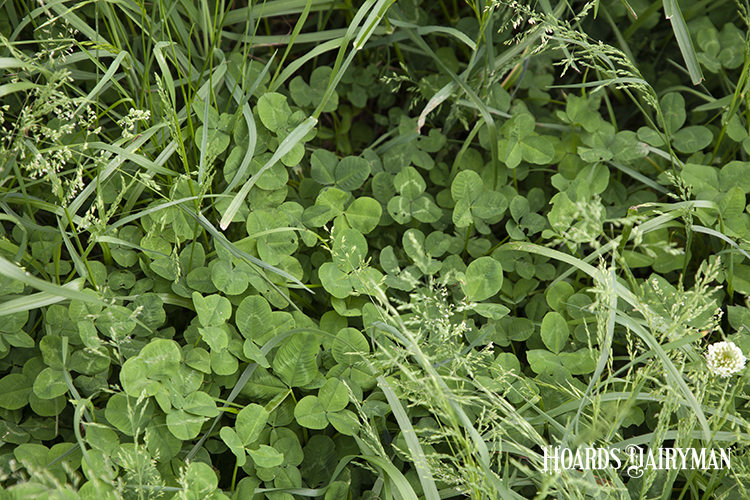
We are at the end of the winter, and soon it will be time to start harvesting winter grass forages for silage. Recently, I have been asked whether grass and legume mixtures ensile well, and following are some comments and data that address this issue.
Silage pH: Data from our laboratory have shown that silage pH is greater when winter annual grasses are grown in mixtures with legumes. In this case, silage of winter annual grasses grown in monoculture had a pH equal to 4.14, silage of winter annual grasses grown in mixture with crimson clover had a pH equal to 4.19, and silage of winter annual grasses grown in mixture with hairy vetch had a pH equal to 4.42. These pH differences can be attributed to at least two things: a lower sugar concentration and greater buffering capacity.
Sugar concentration: In our study, winter annual grasses grown in mixtures with legumes contained less sugars than winter annual grasses grown in monoculture. Specifically, silage of winter annual grasses grown in monoculture had 14.3% sugars, silage of winter annual grasses grown in mixture with crimson clover had 13.2% sugars, and silage of winter annual grasses grown in mixture with hairy vetch had 10.5% sugars. Similar observations have been reported in other studies from the U.K.
Buffering capacity: Legumes have a greater buffering capacity than grasses. By definition, buffering capacity is the ability of the forage to avoid a decrease of pH when adding acid. This means that when the buffering capacity is greater, as it is for legumes, the silage pH will likely be greater. Therefore, the greater pH observed for winter annual grasses grown in mixture with legumes can likely be attributed to the greater buffer capacity of the legumes.
Clostridial fermentation: Clostridia are the third principal anaerobic bacteria involved in the fermentation of forages. These bacteria thrive in wet (greater than 70% moisture) silage and baleage. In addition, clostridial fermentation is more likely to happen with legumes and less likely to occur in corn or sorghum. The downside of clostridial fermentation is that fermentation losses are substantial, and the palatability of the forage is negatively affected. Therefore, significant efforts to avoid clostridial fermentations should be taken when harvesting winter annual grasses in mixtures with legumes.
Strategies to minimize losses
Silage losses can occur while cutting, wilting, ensiling, and feeding forages. Because of the lower concentration of sugars and the greater buffering capacity of legumes, good ensiling practices are paramount to minimize losses. One recommendation is to reduce silage seepage with a fast wilting to cut back forage moisture and allow for proper ensiling. This fast wilting can be accomplished by widening the post-cutting swath. Another recommendation can be to spray silage inoculants on the forage to “manipulate” the fermentation and reduce losses during the fermentation and the feeding stages.








